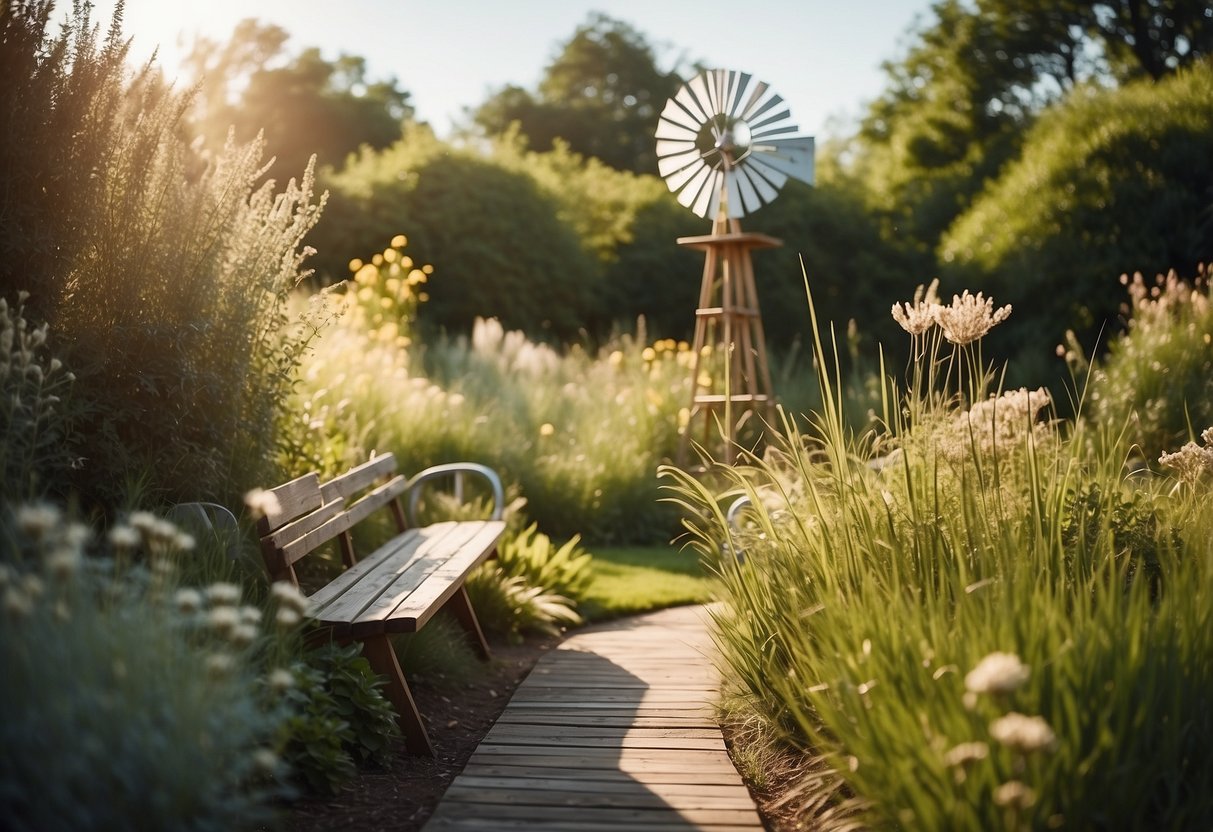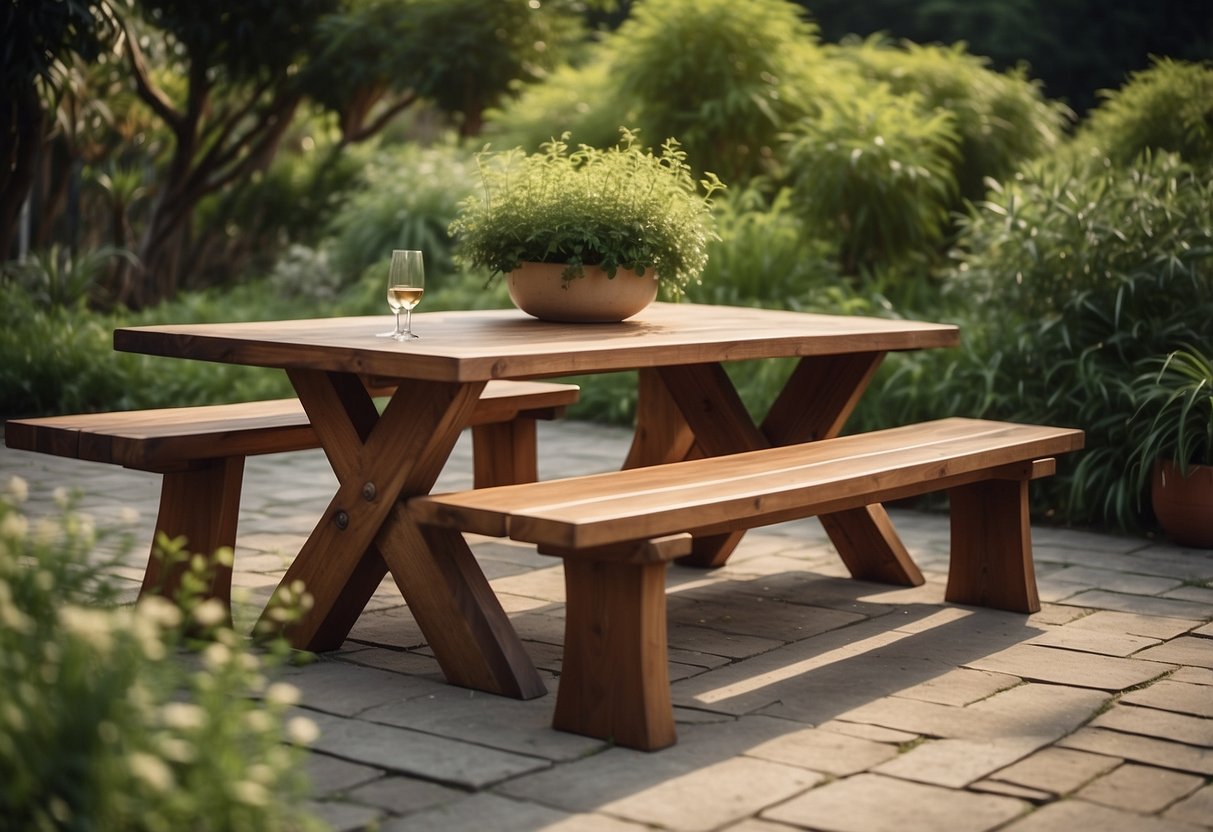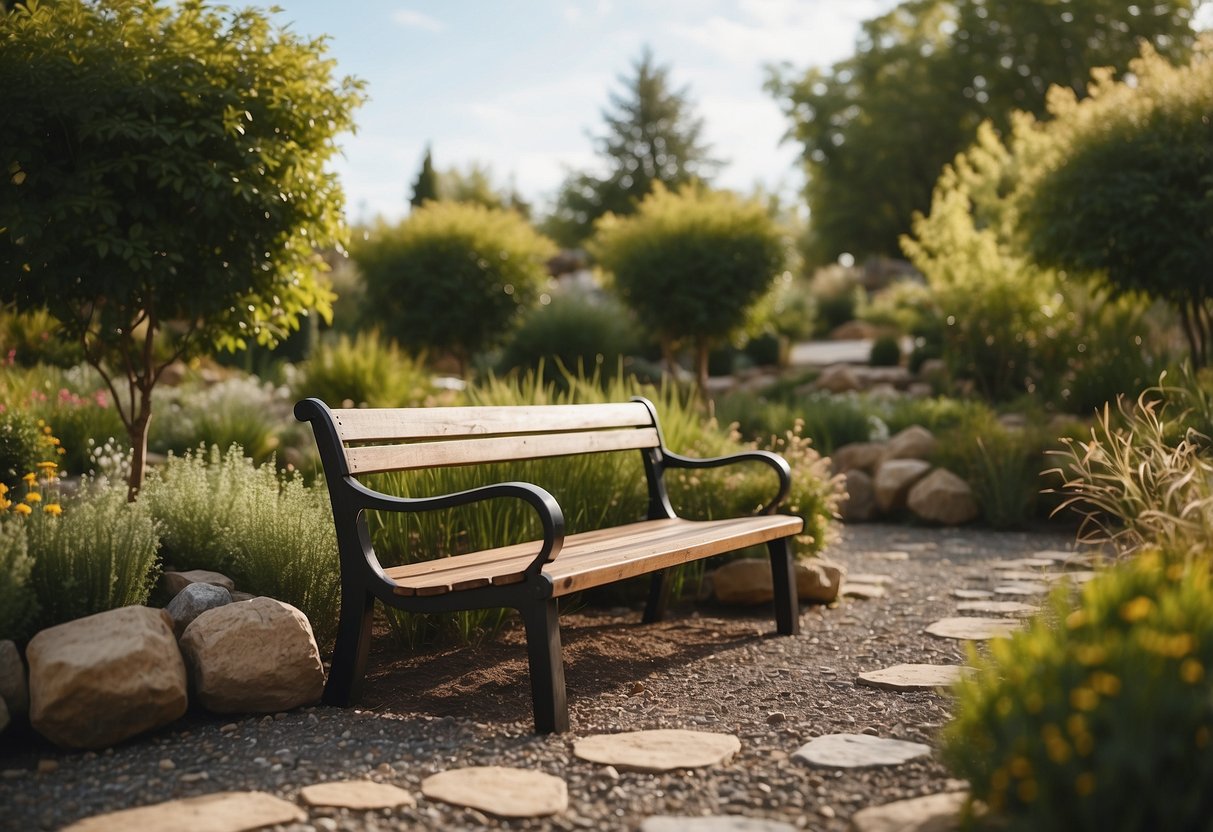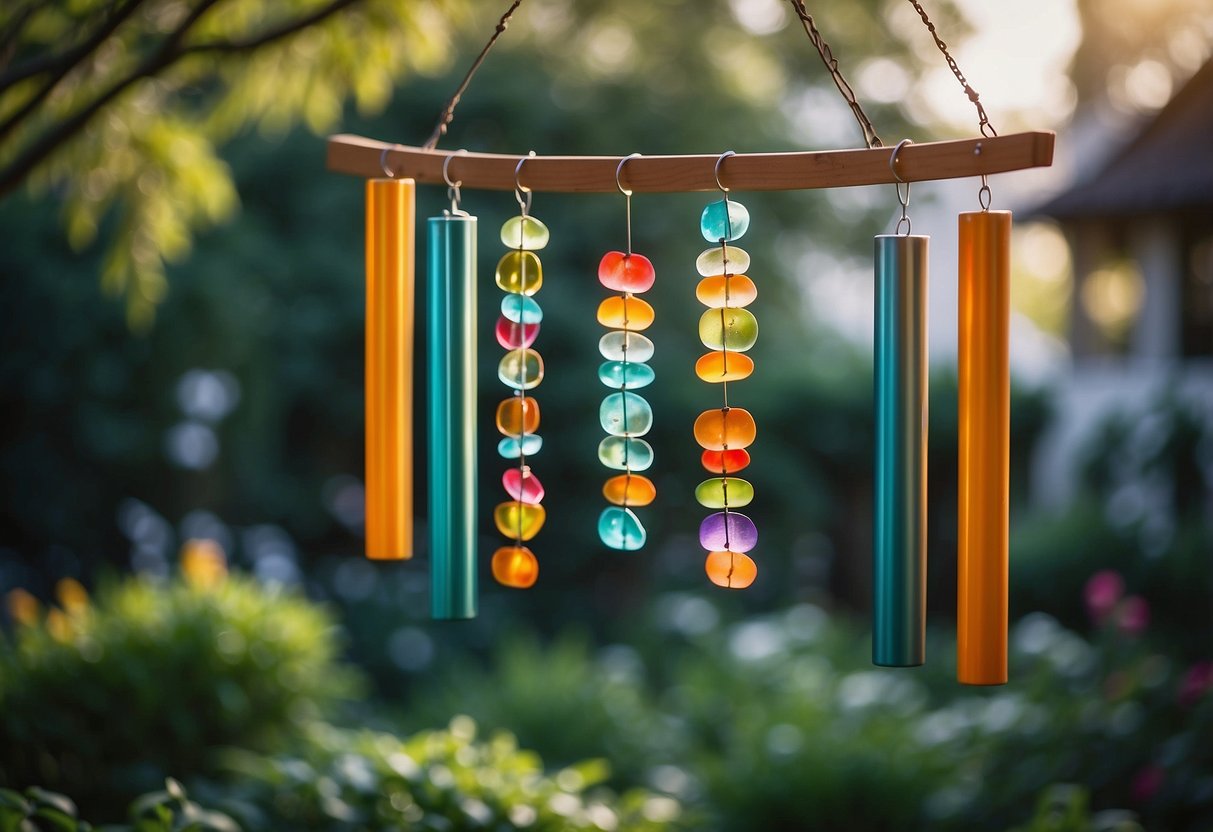Garden Ideas for Windy Areas: Tips for a Flourishing Outdoor Space
Gardening in windy areas can be a bit challenging, but it’s definitely possible to create a beautiful and thriving garden. With the right selection of plants and smart garden design ideas, you can protect your plants from wind damage and enhance your outdoor space. Whether you have a small backyard or a larger garden, you can find plants and techniques that suit your needs.

Embracing the unique conditions of a windy garden, you can discover a variety of wind-resistant plants and clever gardening practices. These strategies will not only keep your garden looking lush and healthy but also make it a more enjoyable place to spend time.
1) Wind-Resistant Shrubs

When choosing shrubs for windy areas, you need tough plants that can stand up to strong gusts. One great option is Juniper, which is well-known for its hardiness and ability to thrive in windy conditions.
English Holly is another excellent choice. It not only tolerates wind but also brings striking red berries and glossy green leaves to your garden.
For a colorful option, consider the Smooth Sumac. It grows up to 15 feet tall and features bright red berry clusters in the fall, making it an eye-catching addition.
2) Sturdy Windbreak Fences

One great way to protect your garden from strong winds is by using sturdy windbreak fences. You can choose from various materials like wood, metal, or composite options.
A coir mat fence offers an eco-friendly choice. It’s made from coconut fibers and is easy to assemble.
Another option is a slatted wooden screen. This design allows some wind to flow through while providing protection and adding style to your garden.
3) Deep-Rooted Perennials

Deep-rooted perennials are great for windy areas because they anchor themselves well.
Consider planting peonies. These flowers have deep tuberous roots and thrive in zones 3 and 4. Their roots help them stay upright even in strong winds. Learn more about peonies.
Another good choice is Stachys, also known as lamb’s ear. Known for its hardy nature, it can withstand tough conditions. Find more info on Stachys.
4) Low-Growing Ground Covers

In windy areas, low-growing ground covers can provide stability and beauty to your garden.
Consider using Lamb’s Ear, which has soft, fuzzy leaves and grows up to one foot tall. It does well even in poor soil conditions.
Another option is Ajuga, a perennial with deep green, bronze, and chocolate-brown leaves that add visual interest.
You might also like Stonecrop. This succulent is both heat and drought tolerant once established, making it a great choice.
5) Compact Vegetable Varieties

In windy areas, smaller and sturdy plants are ideal. Look for compact vegetable varieties like cherry tomatoes and dwarf beans. These types are less likely to get damaged by strong winds.
Miniature bell peppers and baby carrots are also great options. They don’t need much space and can thrive in protected spots of your garden.
6) Sheltered Seating Areas

Creating a cozy spot in your garden where you can escape the wind is key. One idea is to place a garden bench in a sheltered area. This can be achieved by positioning it behind a dense hedge or using a slatted wooden screen for partial wind protection.
You can also use a pergola with panels. Adding panels to an existing pergola or gazebo provides shelter and a stylish retreat for breezy days. Besides, incorporating a sunken garden could be an innovative way to create a calm, private seating area that’s naturally shielded from the wind.
For more on using garden benches in windy areas, check out these tips and ideas.
7) Decorative Wind Sculptures

Adding decorative wind sculptures to your garden can be a fun way to enjoy a breezy day. Wind spinners, for example, are a popular choice. They come in various designs and materials.
Some of these sculptures, like the Kinetic Wind Spinner Zen Circles, are handcrafted and unique. These wind sculptures can also include LED lights for a magical nighttime display.
Wind sculptures are not only decorative but can also serve as focal points in your garden, drawing attention to specific areas. This adds both beauty and movement to your outdoor space.
8) Gravel Mulches

Gravel mulch is a great choice for windy areas. It is heavy enough to stay in place and doesn’t blow away easily. This makes it perfect for preventing soil erosion.
Gravel also helps keep moisture in the soil. It creates a barrier that reduces evaporation.
You can find gravel in various sizes and colors. This makes it easy to match your garden’s style. You can even combine it with other types of mulch for a unique look. For more ideas, check out these landscaping ideas with stone and mulch.
9) Heavy Garden Pots

Heavy garden pots are great for windy areas. They stay put better than lighter pots, even during strong gusts.
When choosing pots, look for those made of hefty materials like ceramic or stone. These materials help keep your plants stable.
You might also fill the bottom of your pots with rocks or sand to add extra weight. This helps prevent them from tipping over.
10) Windchimes for Charm

Windchimes are a lovely addition to any garden, especially in windy areas where they can sing in the breeze. They not only add a musical element but also bring a touch of charm and beauty to your outdoor space.
Try making your own DIY wind chimes with seashells, beads, or antique keys. You can get creative and personalize them to match your garden’s theme.
Consider a dream catcher wind chime, which is easy to make and can add a whimsical touch to your garden.
Understanding Wind-Resistant Garden Design

Designing a garden for windy areas involves choosing the right plants and creating effective windbreaks. These measures help protect your garden and ensure plants can thrive despite high winds.
Why Wind Matters in Garden Planning
Wind can cause significant damage to plants. Strong winds can break stems, uproot plants, and increase water loss through evaporation. Windy conditions can also make it difficult for plants to get the nutrients they need. Understanding the impact of wind on your garden helps you make better choices about the types of plants to grow and how to protect them.
In addition, winds can lower the temperature around plants, which may affect their growth. Devising a plan to manage wind exposure is crucial to maintaining a healthy garden environment.
Choosing Wind-Resistant Plants
Wind-resistant plants have characteristics that help them withstand strong gusts. Plants with flexible stems, such as palms and crepe myrtles, can bend without breaking. Small, narrow leaves reduce wind resistance, making plants like needle-leaved conifers and ornamental grasses suitable for windy areas.
Consider ground covers like Portulaca which can handle wind without losing much moisture. Shrubs like Isanti Red-Osier Dogwood and English Holly also offer good options due to their resilience and ability to thrive in partly sunny conditions.
Designing Windbreaks
Windbreaks serve as barriers that reduce wind speed, protecting more delicate plants. You can use hedges, trees, or even structures like fences. Effective windbreaks often include multiple layers of vegetation.
For hedging, plants such as berberis, hawthorn, oleaster, and sea buckthorn are excellent choices. They offer dense coverage and can withstand strong gusts. Place taller plants and structures on the side of your garden that receives the prevailing wind. This helps create a sheltered area where sensitive plants can grow without facing direct wind pressure.
Designing an effective windbreak can make a significant difference in how well your garden fairs in a windy location.
Soil and Mulching Tips for Windy Gardens

Managing a garden in a windy area can be challenging, especially when it comes to keeping the soil in place and choosing a suitable mulch. Here are some actionable tips to help you maintain a healthy garden despite the wind.
Enhancing Soil Stability
Firstly, use barriers like edging pavers to keep the soil from blowing away. These barriers can be simple rocks or more formal garden edgings, and they help create sheltered areas for your plants.
Another tip is to keep the soil level a bit lower in raised garden beds. This leaves space for mulch and helps protect the soil from wind.
You should also consider adding organic matter like compost to your soil. This improves its structure and helps to hold it together.
Lastly, planting windbreaks like shrubs or small trees can slow down the wind before it reaches your garden beds. This protects both the soil and the plants.
Choosing the Right Mulch
When it comes to mulch, heavier materials are better for windy conditions. Wood chips are a good option since they are dense and tend to stay in place. Avoid lighter mulches like straw or sawdust as they can blow away easily.
You can also use living mulches, such as groundcover plants, to stabilize the soil. These plants cover the soil and protect it from the wind while also adding beauty to your garden.
Creating a barrier on top of your soil can also help. For example, in raised beds, keeping the mulch level below the edge of the bed can shield it from the wind.
If you’re looking for more tips on keeping mulch from blowing away, this guide on mulching windy spots can be helpful.
Creating Microclimates in Windy Areas

Creating microclimates can help protect your garden from strong winds. Use hardscapes and planting structures to shield sensitive plants and create a more stable environment.
Using Hardscapes Effectively
Hardscapes like walls, fences, and raised beds can break up wind flow. A well-placed wall can reduce wind speed significantly. Use materials like stone, brick, or wood to build these structures.
A lattice fence is another effective option. It allows some wind to pass through, reducing pressure while still offering protection. This can be especially useful near vegetable gardens or flower beds.
Garden paths made from bricks or stones can also help. They can create small wind-blocked zones where you can plant more delicate species. Consider adding stepping stones or gravel areas to reinforce the ground and reduce wind erosion.
Planting Structures for Protection
Windbreak plants can significantly improve your garden’s microclimate. Trees, bushes, and tall grasses planted in rows can block or slow down wind. These are also called shelterbelts and can be quite attractive.
Choose evergreen trees for year-round protection. Species like pines or cedars are excellent choices because they maintain their foliage throughout the year. Plant these trees in a staggered pattern to maximize coverage.
Hedges are another good option. Plants like boxwood or privet grow dense and can act as a natural barrier. You can also use smaller plants like ferns and shrubs to fill gaps and add layers of protection. Remember to leave enough space between plants for air circulation to prevent disease.
For added protection, consider using climbing plants on trellises or arbors. Ivy, clematis, and vine varieties like grape can cover vertical structures and provide an extra layer of wind defense.







